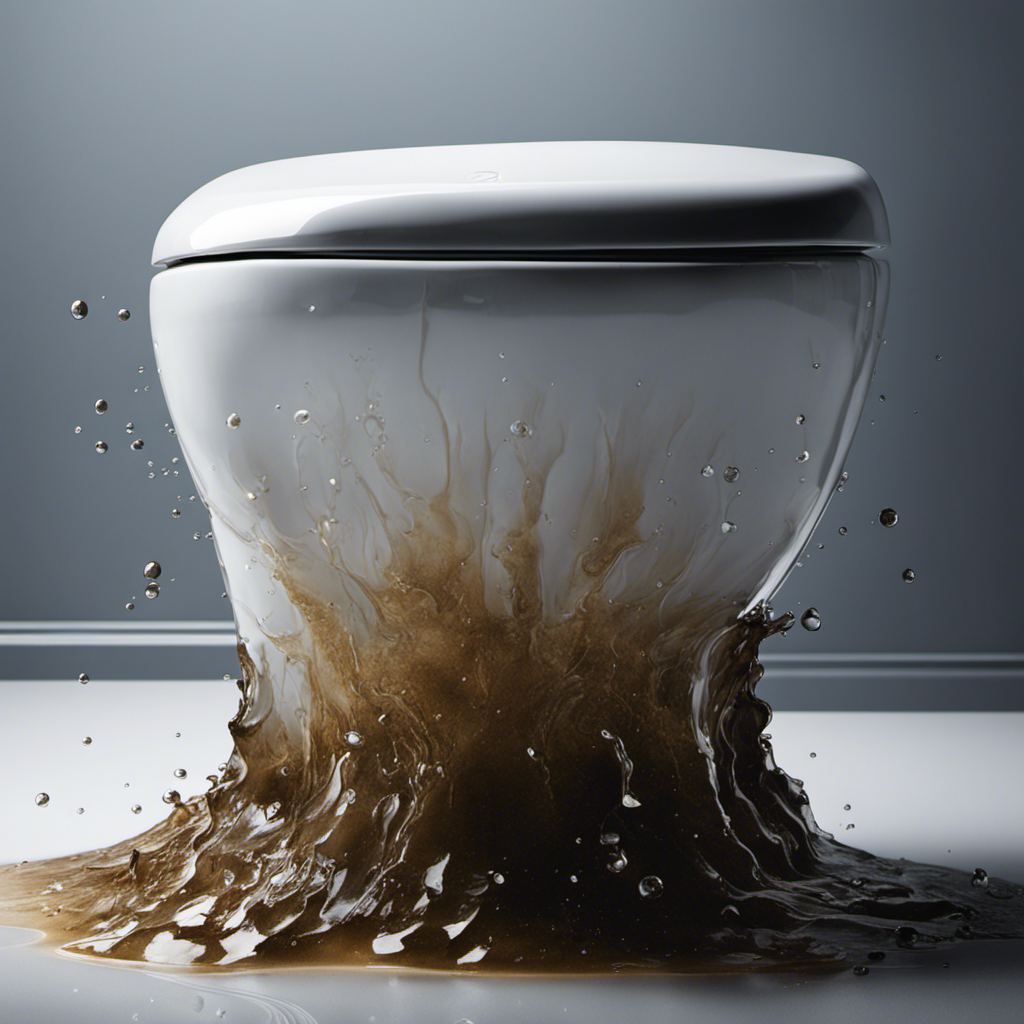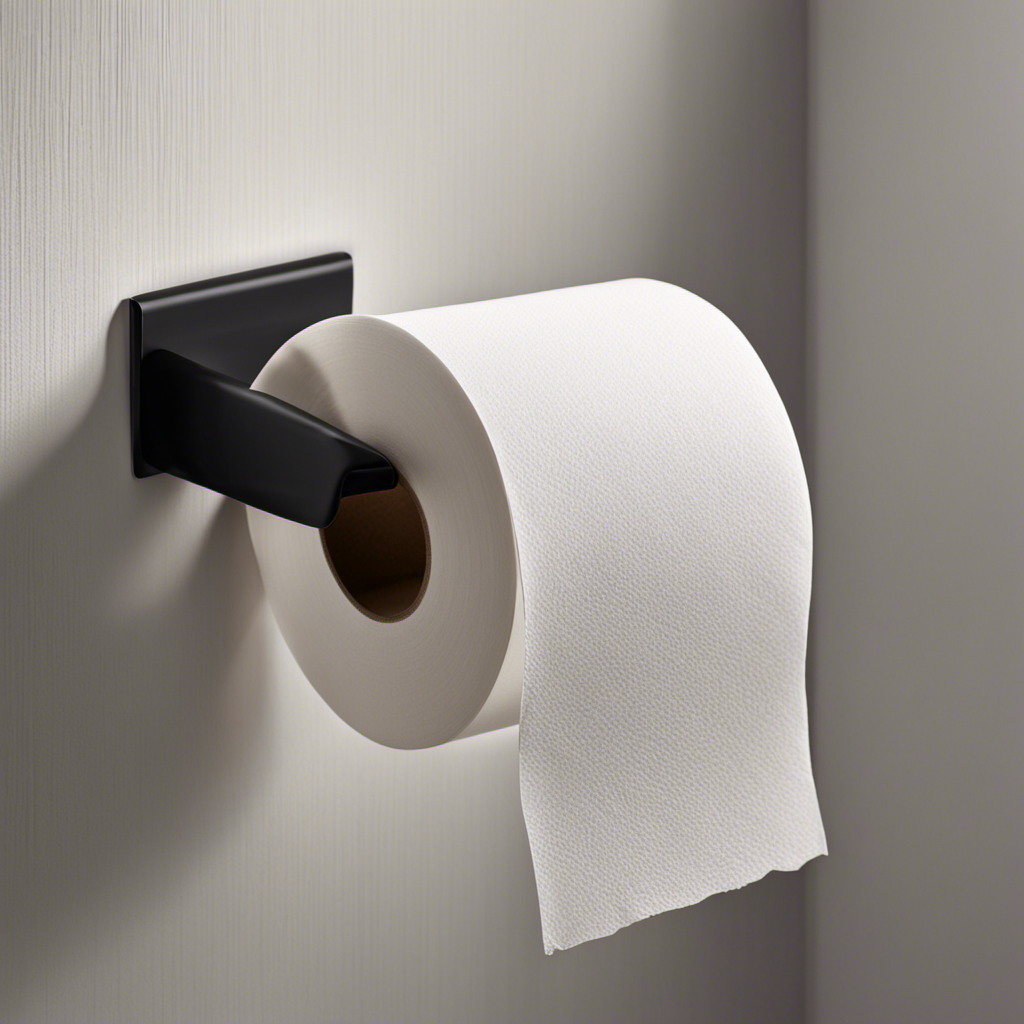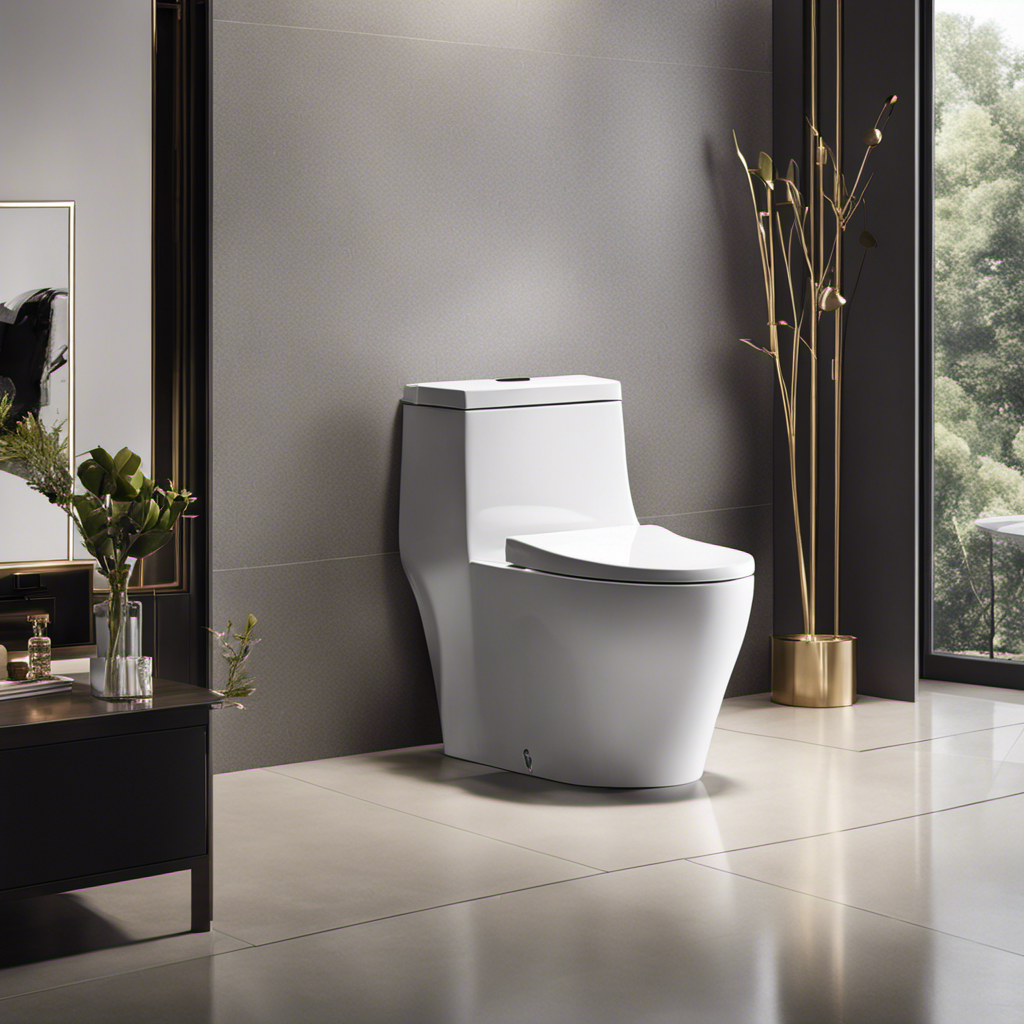Hey there! Ever wondered what’s causing that pesky toilet leak at the bottom of the tank? Well, I’ve got you covered.
In this article, I’ll walk you through the common causes of these leaks and help you identify the source. And don’t worry, I’ll also give you some step-by-step instructions on how to fix the problem yourself.
Plus, I’ll share some preventative measures to keep those leaks at bay in the future. So let’s dive in and put an end to those toilet troubles!
Key Takeaways
- Worn out or damaged flapper valves are a common cause of toilet leaks at the bottom of the tank.
- It is important to inspect the flapper valve, water level, overflow tube, and fill valve to identify the source of the leak.
- To fix a toilet leak at the bottom of the tank, you may need to replace the flapper valve, tighten loose bolts, and inspect and replace the rubber gasket between the tank and bowl.
- Taking preventative measures such as regularly maintaining the fill valve, cleaning the flush valve, and inspecting and replacing the wax ring can help avoid toilet leaks in the future.
Common Causes of Toilet Leaks at the Bottom of the Tank
One of the most common causes of toilet leaks at the bottom of the tank is a worn out flapper. The flapper is a crucial component of the toilet tank anatomy. It is a rubber valve that controls the water flow from the tank into the bowl when you flush.
Over time, the flapper can deteriorate and lose its effectiveness, resulting in leaks. Troubleshooting toilet leaks requires a careful examination of the flapper. If it appears cracked, warped, or no longer forms a tight seal, it is likely the cause of the leak.
Replacing the flapper is a simple and inexpensive fix that can solve the problem.
Now, let’s move on to identifying the source of the leak in the toilet tank.
Identifying the Source of the Leak in the Toilet Tank
To pinpoint the source of the leak in your toilet tank, start by checking the water supply line and its connection to the fill valve. This is a common area where leaks can occur. Here are some steps to help you detect and diagnose toilet tank leaks:
-
Check the water level: If the water level in your toilet tank drops significantly between flushes, it may indicate a leak.
-
Inspect the flapper valve: A worn or improperly seated flapper valve can cause water to leak from the tank into the bowl.
-
Examine the overflow tube: An overflowing tube can result in continuous water flow and waste water.
-
Look for cracks or damage: Inspect the tank for any visible cracks or damage that could be causing the leak.
-
Test the fill valve: A faulty fill valve can lead to water continuously running into the tank.
By following these steps, you can successfully detect and diagnose toilet tank leaks.
Keep an eye out for these signs to prevent further water wastage and potential damage to your bathroom.
How to Fix a Toilet Leak at the Bottom of the Tank
Check if there’s any water pooling around the base of your toilet, as this could indicate a leak at the bottom of the tank. If you notice any water, it’s important to address the issue promptly to prevent further damage.
Thankfully, there are some DIY toilet leak repair methods you can try before calling a professional. First, check the bolts that connect the tank to the bowl. If they’re loose, tighten them carefully.
Next, inspect the rubber gasket between the tank and the bowl. If it’s worn or cracked, replace it with a new one. Another common cause of leaks is a faulty flapper valve. In this case, replacing the flapper should solve the problem.
Remember to turn off the water supply and flush the toilet to drain the tank before starting any repairs. By following these troubleshooting steps, you can fix a toilet leak at the bottom of the tank on your own.
Preventative Measures to Avoid Toilet Leaks in the Future
By regularly maintaining and inspecting the components, you can prevent future leaks in your toilet. Here are some DIY toilet leak prevention measures to consider:
-
Replace the flapper: Over time, the flapper valve can deteriorate and cause leaks. Replace it if you notice any signs of wear or damage.
-
Check the fill valve: Ensure that the fill valve is functioning properly and not overflowing or constantly running.
-
Tighten connections: Regularly check and tighten any loose connections between the tank and bowl.
-
Clean the flush valve: Mineral deposits can build up on the flush valve, causing leaks. Clean it regularly to prevent clogs and leaks.
-
Inspect the wax ring: The wax ring seals the toilet to the floor. If it’s worn or damaged, it can lead to leaks. Replace it if necessary.
When to Call a Professional for Toilet Leak Repairs
If you notice persistent water pooling around the base of your toilet, it may be time to call a professional for toilet leak repairs. This is one of the signs of a toilet leak at the bottom of the tank. A leaking toilet can lead to water damage, mold growth, and increased water bills. It is important to address the issue promptly to avoid further damage.
Hiring a professional for toilet leak repairs ensures that the problem is diagnosed accurately and fixed correctly. The cost of professional toilet leak repairs can vary depending on the extent of the damage and the specific repairs needed. However, investing in professional repairs is worth it to prevent more costly issues down the line.
Frequently Asked Questions
How Do I Know if the Leak Is Coming From the Bottom of the Toilet Tank?
When troubleshooting toilet leaks, I first check if the leak is coming from the bottom of the tank. To do so, I inspect the area around the base of the toilet tank for any signs of water or moisture.
Can a Toilet Leak at the Bottom of the Tank Cause Damage to My Bathroom Floor?
A toilet leak at the bottom of the tank can cause extensive damage to the bathroom floor. Repairing toilet leaks promptly is crucial to avoid costly repairs. It’s important to address the issue as soon as possible.
Are There Any DIY Methods to Fix a Toilet Leak at the Bottom of the Tank?
I’ve found a few DIY methods for fixing a toilet leak at the bottom of the tank. Common causes include a faulty flush valve or a worn-out tank-to-bowl gasket. These issues can often be resolved with simple repairs or replacements.
Can a Toilet Leak at the Bottom of the Tank Lead to Increased Water Bills?
A toilet leak at the bottom of the tank can indeed lead to increased water bills. On average, a leaking toilet can waste up to 200 gallons of water per day, causing a significant impact on your utility costs.
Is It Possible for a Toilet Leak at the Bottom of the Tank to Be a Sign of a Larger Plumbing Issue?
It’s possible for a toilet leak at the bottom of the tank to indicate a larger plumbing issue. A professional inspection can determine the cause and provide necessary repairs to prevent further damage.
Conclusion
In conclusion, fixing a toilet leak at the bottom of the tank doesn’t have to be a daunting task. By identifying the source of the leak and following the necessary steps, you can easily resolve the issue.
Remember to take preventative measures to avoid future leaks, such as regularly inspecting the tank and ensuring all components are in good condition.
However, if you’re unsure or the problem persists, don’t hesitate to call a professional for expert assistance.
Keep your toilet leak-free and your bathroom a tranquil oasis.










